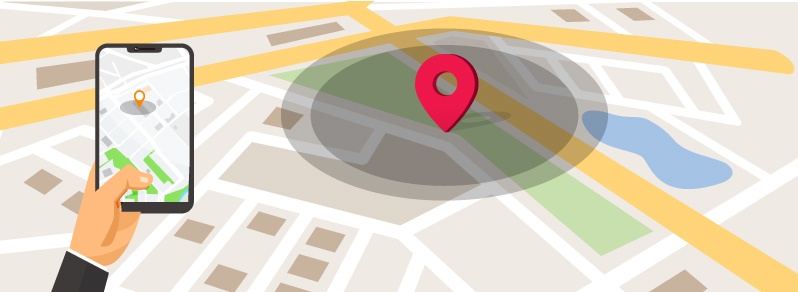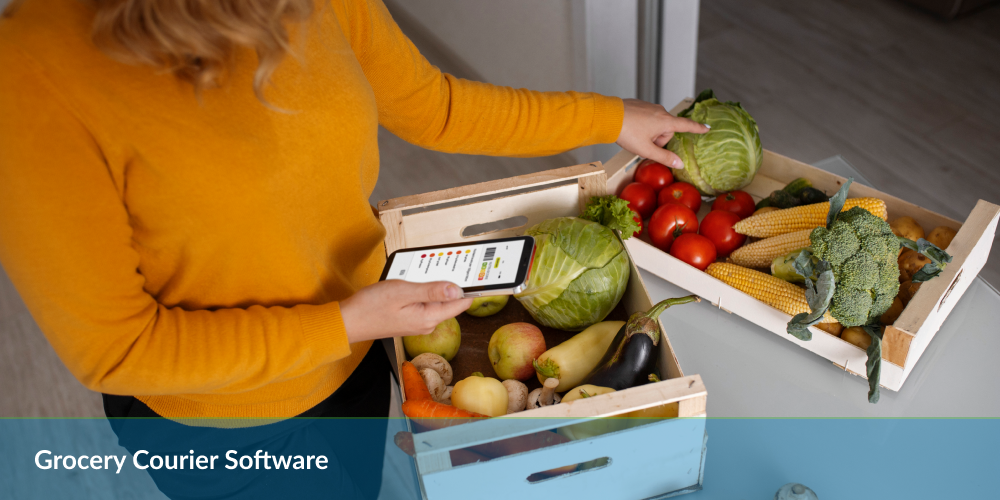Table of Contents
The growth of smartphone users across the globe has empowered delivery businesses to take full advantage of mobile technology and harness the power of location-based deliveries.
With customer expectations in the delivery sector growing, more businesses are looking towards GPS-based solutions to push their fleet capabilities and reduce anomalies.
One such concept is geofencing, which uses a virtual perimeter for an actual geographic area. The technology is particularly effective in driving last-mile delivery operations.
But first, what is geofencing in general? Let’s find out.
What is a Geofence?
Geofencing is a service that uses GPS, RFID, Wi-Fi, and cellular data to trigger a pre-programmed action whenever a mobile device enters or exits a virtual boundary tagged around a geographical location, also known as a geofence.
A geofence can trigger push notifications, text messages, and alerts depending on the configuration. In addition, geofences allow managers to monitor delivery agents in the field and keep track of their activities in real-time.
Now that we know what geofencing is, let’s look at how it optimizes last-mile delivery operations.

How Geofencing Optimizes Last-Mile Delivery Operations
One of the major challenges most delivery businesses face is inefficient fleet management. In turn, it leads to increased delivery costs, increased fleet idle time, and delayed deliveries.
So, the question is, how can businesses utilize resources efficiently and provide a seamless delivery experience?
As delivery businesses are increasingly shifting towards creating an omnichannel presence, the future lies in integrating newer technologies in the supply chain system.
Modern delivery and dispatch software utilize GPS-enabled fleet tracking capabilities equipped with geofencing technology to streamline logistics, distribution, and last-mile delivery operations.
It allows delivery companies to regulate large-scale operations down to every last detail. In addition, it gives real-time information about fleet movement and other parameters ensuring complete transparency into the delivery operations.
Here’s how geofencing has transformed last-mile delivery operations:
1. Efficient Fleet Management:
Geofencing helps in managing fleet and route scheduling through GPS-based perimeters. The received information from each trigger is matched with the delivery agent’s assigned route details to monitor any delays, stoppages, emergencies, or any unexplained behavior.
In addition, the data collected over time helps companies to improve their processes and streamline their delivery operations. Since last-mile delivery is an important component of customer satisfaction, efficient fleet management through geofencing helps achieve higher levels of CSAT
2. Real-time Evaluation of SLAs:
Service Level Agreements (SLAs) are an important component of your contracts with a client. With geofencing, you can monitor any pre-assigned metrics and ensure they are duly followed by your delivery agents.
3. Effective Communication:
GPS tracking software with geofencing ensures hassle-free communication between all stakeholders across the logistics and last-mile delivery teams.
This includes accurate customer intimation about a delivery, returns, and progress updates. With timely updates to all participants, you can minimize resource wastage and increase customer satisfaction.
4. Preventing Malpractices:
Maintaining vehicular fleets requires expensive investment to cover fuel costs, wear & tear, vehicle breakdowns, and more. This is the reason incidents like vehicle theft, damage, and misuse are common occurrences in the logistics industry.
With geofencing, you can monitor your delivery agents in real-time and identify the vehicles that breach geofenced areas.
5. Improved safety:
Geofencing uses a virtual perimeter for a certain geographic area where digital traffic regulations can be applied. This includes driving at fuel-efficient speeds and instant sharing of regulations with connected vehicles.
In addition, accidents within or outside a geofence can be quickly managed by sending required backup and assistance teams effectively.
The NetworkON Advantage
Delivery and dispatch platforms like NetworkON offer a bird’s-eye view of all the customer orders and your fleet operations across the entire order lifecycle.
By leveraging technologies like route optimization, fleet visibility management, performance analytics, and geofencing, NetworkON enhances your business operations in a hassle-free manner.
Connect now to discover more about our logistics management platform at info@networkon.io or visit our website.
Frequently Asked Questions
What is geofencing, and how does it work?
Geofencing is a technology that uses GPS, RFID, Wi-Fi, and cellular data to create a virtual boundary around a specific geographic area. When a mobile device enters or exits this virtual boundary, it triggers a pre-programmed action, such as sending push notifications, text messages, or alerts. This technology monitors and manages delivery agents in real-time, ensuring efficient and secure operations.
How does geofencing optimize last-mile delivery operations?
Geofencing optimizes last-mile delivery by enabling efficient fleet management and real-time monitoring of delivery agents. It helps track vehicle movements, manage route schedules, and ensure Service Level Agreements (SLAs) compliance. This technology also facilitates communication with customers and stakeholders, prevents malpractices like vehicle misuse or theft, and enhances overall safety by monitoring driving behavior and responding quickly to accidents.
What are the benefits of using geofencing in delivery operations?
The benefits of using geofencing in delivery operations include:
Efficient Fleet Management: Improved route scheduling and monitoring to minimize delays and maximize productivity.
Real-time Evaluation of SLAs: Ensures delivery agents adhere to agreed-upon metrics, improving service reliability.
Effective Communication: Provides timely updates to customers and stakeholders, reducing resource wastage and enhancing customer satisfaction.
Prevention of Malpractices: Tracking real-time locations helps prevent vehicle misuse, theft, and unauthorized activities.
Improved Safety: Allows for quick response to accidents and promotes safe driving behaviors within the geofenced area.
How does NetworkON utilize geofencing technology to enhance business operations?
NetworkON leverages geofencing technology to comprehensively view fleet operations and customer orders throughout the order lifecycle. NetworkON helps businesses streamline logistics and delivery processes, reduce operational inefficiencies, and improve overall customer satisfaction by integrating features like route optimization, fleet visibility management, performance analytics, and geofencing.





0 Conversations